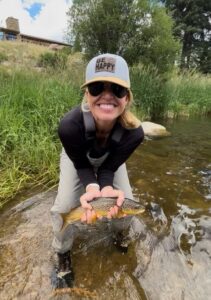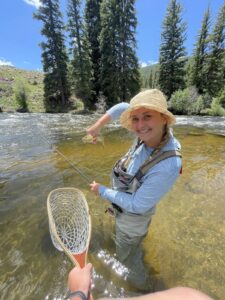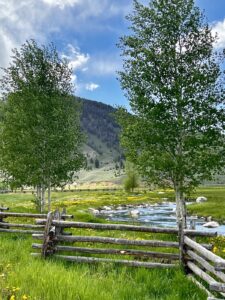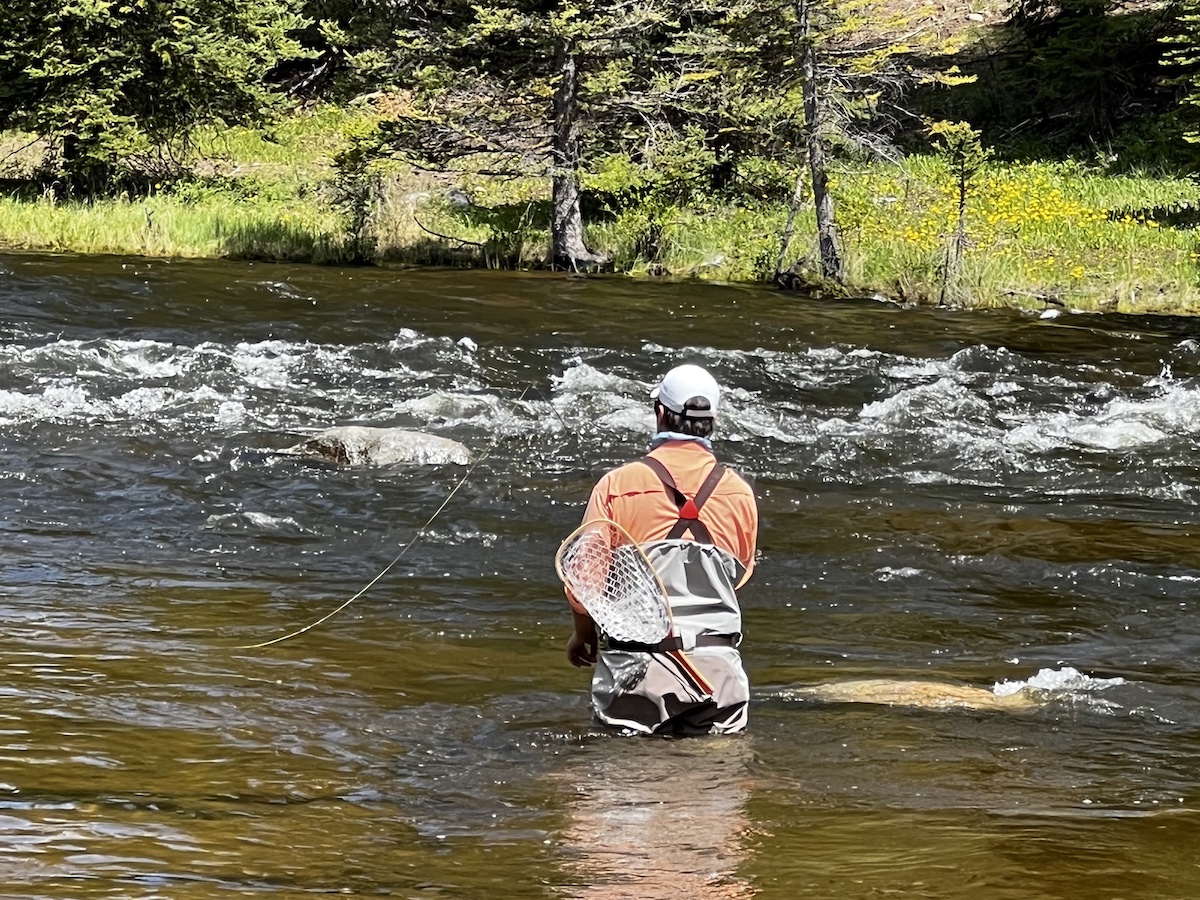Fishing conditions have been well above average, especially considering the time of year. Flows on the Taylor River have been very steady. The river gauge in Almont is measuring approximately 420 cfs. Taylor Park Reservoir is releasing 325 cfs. That is scheduled to drop to 300 cfs for the month of September. Water temperatures are still fluctuating between 50 and 60 degrees. Perfect temperatures for trout fishing.
 Mornings on the Taylor have a tiny chill to the air, but the first sign of warmth on the river can often bring a flurry of bug activity. Mayfly spinners and egg laying Caddis can be the first flying bugs of the day. You will see a variety of Mayflies forming mating swarms, and shortly after, the females will return to the water to lay eggs, becoming an easy meal for a trout. Para Adams and Rusty Spinners in size 14-20 have been catching rising fish.
Mornings on the Taylor have a tiny chill to the air, but the first sign of warmth on the river can often bring a flurry of bug activity. Mayfly spinners and egg laying Caddis can be the first flying bugs of the day. You will see a variety of Mayflies forming mating swarms, and shortly after, the females will return to the water to lay eggs, becoming an easy meal for a trout. Para Adams and Rusty Spinners in size 14-20 have been catching rising fish.
Egg laying Caddis can be seen bouncing on the water also. Trout seem to prefer a little movement to an egg laying imitation, as opposed to a dead drift. Use across or even down and across presentations with a #14-18 Elk Hair Caddis or small Stimulator to get their attention.
Small Midges, I mean REALLY small Midges, have been hatching in copious numbers. They can be so small, they aren’t really worth imitating, but be on the lookout for sizable(fishable) Midges. The Midges can be so prolific that the trout key in on, and eat nothing other than, a small Midge pattern directed towards the bottom.
 Potentially by late morning, certainly by early afternoon, you should see a small variety of Mayflies hatching. Predominantly #18-22 Blue Wing Olives, though #16-18 PMDs and Flavs are still kicking around. Keeping the dropper on even during a hatch, has been the key to repeatable success. Micro Mayflies, Pheasant Tails, WD40s, and RS2s are great droppers during a mayfly hatch. There have been sporadic #18-20 Caddis hatches also, Cloudy skies tend to bring thicker hatches and more fish to the surface.
Potentially by late morning, certainly by early afternoon, you should see a small variety of Mayflies hatching. Predominantly #18-22 Blue Wing Olives, though #16-18 PMDs and Flavs are still kicking around. Keeping the dropper on even during a hatch, has been the key to repeatable success. Micro Mayflies, Pheasant Tails, WD40s, and RS2s are great droppers during a mayfly hatch. There have been sporadic #18-20 Caddis hatches also, Cloudy skies tend to bring thicker hatches and more fish to the surface.
Evenings have been the best fishing of the day! There is a mixture of #16-20 Caddis hatching, egg laying Caddis, and Mayfly spinners. An Elk Hair Caddis, Stimulator, or Peacock Caddis occasionally twitched has been hard for the fish to turn down. Fly choice seems to be less important in the evenings. The fish are just hungry and willing to move around for their food as it gets dark.
 The Dream Stream hasn’t been on fire but has been very reliable. This is the time of year to use a big dry fly on the stream. Large Caddis are still flying around with the grasshoppers. A #10-14 Elk Hair Caddis or any big hopper pattern should produce an exciting take.
The Dream Stream hasn’t been on fire but has been very reliable. This is the time of year to use a big dry fly on the stream. Large Caddis are still flying around with the grasshoppers. A #10-14 Elk Hair Caddis or any big hopper pattern should produce an exciting take.
Mayfly spinners are out in mating swarms in the morning, mostly BWOs, so a #16-18 Rusty Spinner or Para Adams presented delicately should work. Prolific hatches have slowed down but we’ve seen dense enough BWO hatches that will bring the fish to the surface for an hour or two. Dropping a Barr’s Emerger or RS2 below your dry will increase your odds.
The ponds at Wilder are fishing well and received little pressure this season. Some trout are still cruising around looking for Damselflies in the weed beds. Stripping small Woolly Buggers and Pheasant Tails can get their attention. Hoppers, Caddis, and Damselflies offer good imitations to get fish on the surface. Lead your fish, twitch your fly a couple times and let it set still as the fish approaches.
If you really want to test your angling skills, target the fish in the pond that are eating small midges. Size 18-24 Midges are almost always hatching during the day. You can easily determine which fish are sipping midges, often towards the inlet. Very delicate presentations, with 6x tippet to a small midge emerger such as Black Beauty, Zebra Midge, Sierra Dot, or Griffith’s Gnat should work.
We just might skirt by our summer “doldrums”. Fall weather is quickly approaching.
Fish hard, and pinch your barbs,
Ben Riedel
Master Fly Fishing Guide
Wilder on the Taylor









